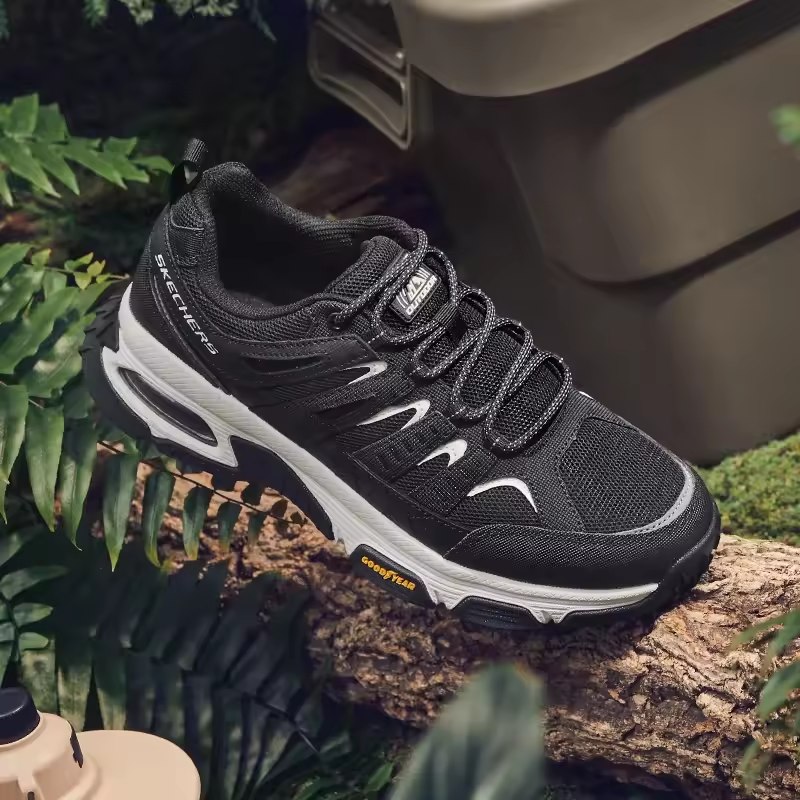
Hoka Running Shoes: Comfort, Performance & the Best Model
Introduction to Hoka Running Shoes
When it comes to long-distance running or trail adventures, Hoka running shoes have become a game-changer in the athletic footwear industry. Known for their maximalist cushioning and innovative designs, Hoka running shoes offer unparalleled comfort and support. Whether you’re training for a marathon or tackling rugged terrain, these shoes are engineered to reduce impact, enhance stability, and keep you moving effortlessly. This guide will explore everything you need to know about running shoes, from their unique features to how to choose the best Hoka running shoes for your specific needs. By the end, you’ll understand why Hoka has become a favorite among runners worldwide.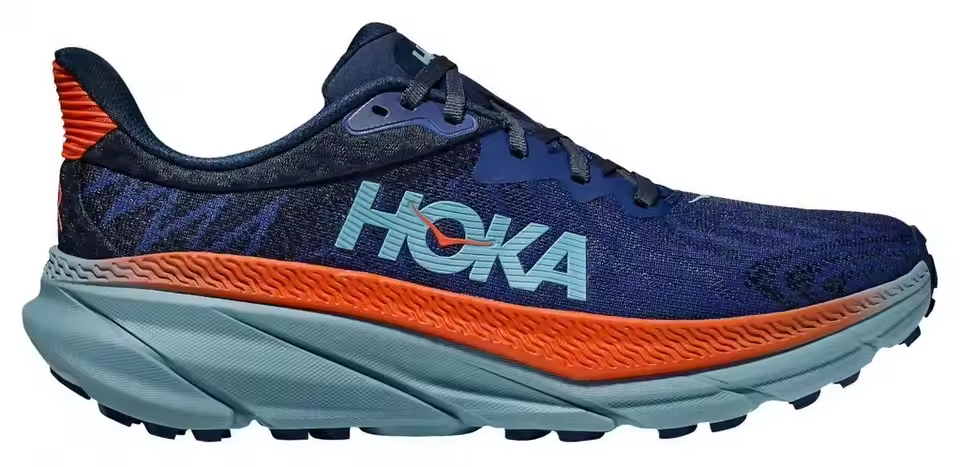
Why Hoka Running Shoes Stand Out
- Maximalist Cushioning: Hoka’s proprietary EVA midsoles provide a soft, responsive ride, reducing joint strain during long runs.
- Lightweight Design: Despite their thick soles, running shoes are surprisingly light, thanks to advanced materials like Meta-Rocker technology.
- Versatility: From road running to trail racing, Hoka offers models tailored to different surfaces and distances.
- Wide Fit Options: Many running shoes include wide sizes, addressing the needs of runners with broader feet.
- Durability: Reinforced outsoles and breathable uppers ensure these shoes withstand frequent use.
By combining comfort with performance, Hoka shoes redefine what runners expect from their footwear.
Key Features of Hoka Running Shoes
- Meta-Rocker Technology: A curved sole design that promotes a smooth heel-to-toe transition, reducing fatigue.
- J-Frame Support: A structural element that enhances stability for overpronators or runners with flat feet.
- Breathable Upper Materials: Engineered mesh uppers keep feet cool and dry during intense runs.
- Vibram Outsoles: Durable rubber for superior traction on trails or roads.
- Zero Drop Platform: Promotes natural foot alignment for minimalist runners.
These features make Hoka running shoes ideal for both casual and competitive runners.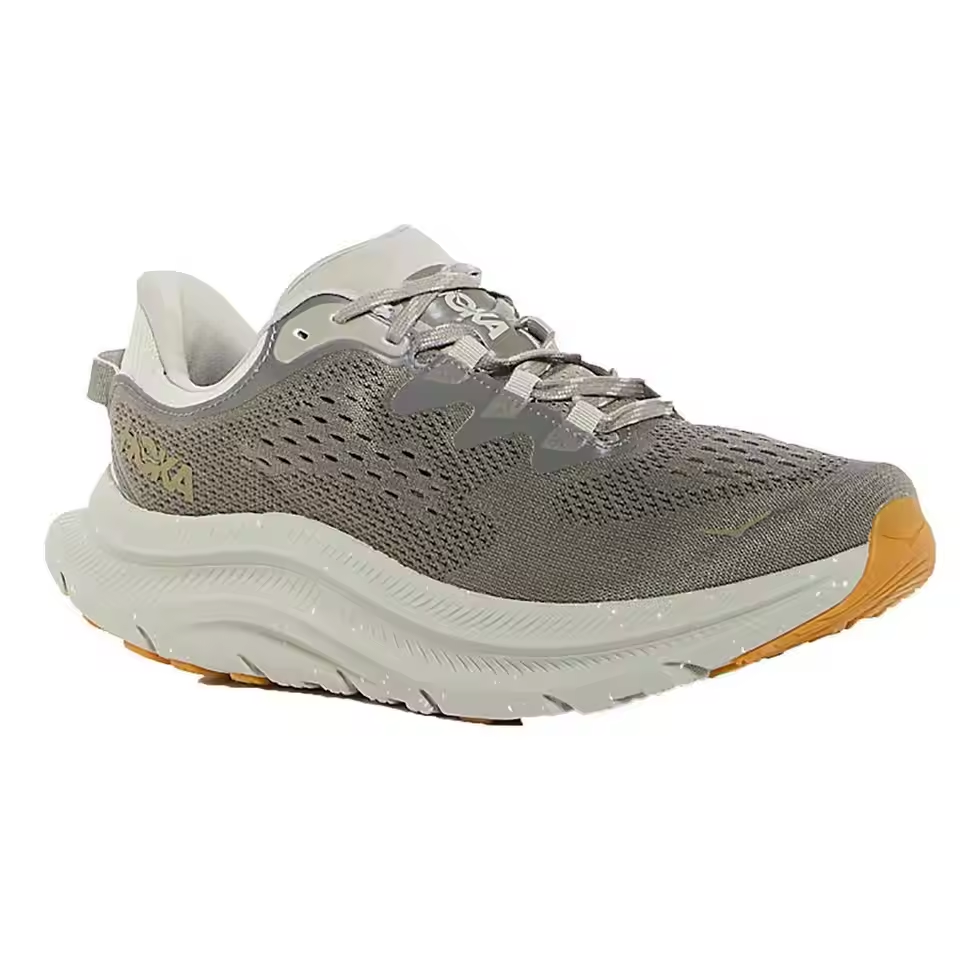
How to Choose the Best Hoka Running Shoes
- Determine Your Running Style:
- Road Runners: Opt for models like the Hoka Clifton or Bondi for maximum cushioning.
- Trail Runners: Choose the Stinson or Speedgoat for rugged terrain and added grip.
- Assess Your Foot Type:
- Overpronators: Look for models with J-Frame support, such as the Hoka Gaviota.
- Neutral Strides: The Hoka Tecton X or Mach 5 are excellent choices.
- Consider Fit and Width:
- Hoka running shoes for wide feet are available in EE sizes for a snug yet spacious fit.
- Test the shoes in person to ensure toe room and arch support meet your needs.
- Check Weight and Stack Height:
- Lightweight models like the Hoka Speedgoat 6 are ideal for speed, while heavier models like the Bondi 8 suit long-distance runners.
Selecting the best Hoka running shoes depends on your specific requirements.
Top Models of Hoka Shoes
- Hoka Clifton 9: A road-running staple with a plush, cloud-like feel.
- Hoka Speedgoat 6: Designed for trail runners, featuring Vibram outsoles and aggressive lugs.
- Hoka Bondi 8: The thickest, most cushioned model for ultra-runners.
- Hoka Tecton X 3: Combines cushioning with a lighter, more responsive build.
- Hoka Mach 5: A versatile option for both road and trail, with a streamlined design.
Each model caters to different running styles and preferences.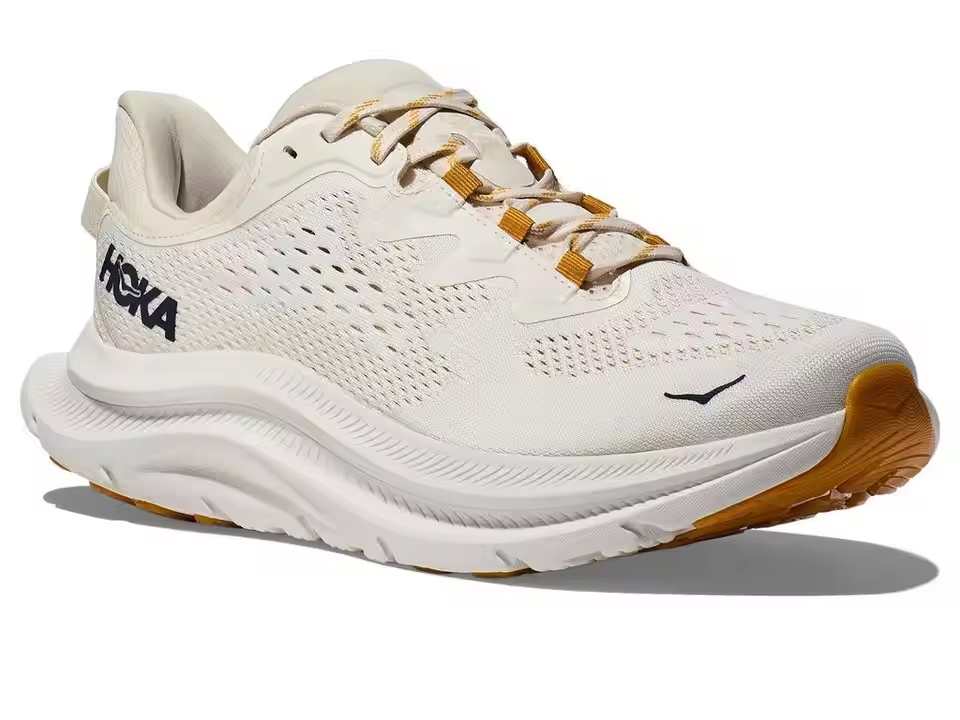
Best Hoka Running Shoes for Specific Needs
- For Long-Distance Runners:
- Hoka Bondi 8: Maximal cushioning reduces fatigue during marathons or ultras.
- For Trail Runners:
- Hoka Speedgoat 6: Vibram soles and protective uppers handle rough terrain.
- For Overpronators:
- Hoka Gaviota 3: J-Frame support stabilizes gait for added comfort.
- For Neutral Runners:
- Hoka Tecton X 3: Balanced cushioning and responsiveness for everyday training.
- For Wide Feet:
- Hoka Clifton 9 (Wide): Spacious toe boxes prevent blisters and pressure points.
The best Hoka running shoes match your biomechanics and goals.
How to Measure for Hoka Running Shoes
- Measure in the Evening: Feet swell after activity, so measure later in the day for accuracy.
- Use a Branded Size Chart: Hoka sizes vary slightly between models. Compare your measurements to the brand’s size guide.
- Check Toe Room: Leave ½ inch (1.27 cm) of space between your longest toe and the front of the shoe.
- Test for Arch Support: Stand barefoot and note your natural arch. Choose shoes with adequate support to prevent overpronation.
- Compare Both Feet: Most people have one foot slightly larger than the other. Size to the larger foot for consistency.
By following these steps, you’ll find running shoes that fit perfectly and perform reliably.
Common Mistakes to Avoid When Buying Running Shoes
- Ignoring the Fit: A poor fit can lead to blisters or long-term foot issues. Always test the shoes before purchasing.
- Overlooking Stack Height: Excessive cushioning may not suit all runners—start with a mid-stack model if you’re new to maximalist shoes.
- Neglecting Break-In Time: New running shoes need time to mold to your feet. Avoid marathon runs with unbroken-in pairs.
- Skipping Reviews: Read user feedback to gauge real-world performance and comfort.
- Choosing Based on Style: Prioritize function over aesthetics—comfort should always come first.
Avoiding these pitfalls ensures your running shoes deliver consistent performance.
How to Maintain Running Shoes
Proper care extends the life of your running shoes:
- Clean Regularly: Wipe off dirt with a damp cloth. For deep cleaning, use mild detergent and air dry.
- Rotate Pairs: Alternate between two pairs to allow the cushioning to recover between uses.
- Replace Worn-Out Soles: Check for uneven wear patterns and replace shoes when the tread is compromised.
- Store Properly: Keep shoes in a cool, dry place to prevent mold and odor.
- Use Insoles if Needed: Custom orthotics can enhance support without compromising the shoe’s width.
Maintaining your running shoes ensures they remain effective for longer.
Hoka Running Shoes vs. Other Brands
| Feature | Hoka Running Shoes | Nike React Infinity Run | Saucony Endorphin Speed |
|---|---|---|---|
| Cushioning | Maximal (28–35 mm stack height) | Moderate (32 mm stack height) | Moderate (32 mm stack height) |
| Weight | 9–12 oz (255–340 g) | 10–12 oz (283–340 g) | 9–10 oz (255–283 g) |
| Traction | Vibram outsoles for trails; smooth for roads | Rubber outsoles with moderate grip | Responsive outsoles for road running |
| Support | J-Frame in select models | Flyknit upper for natural movement | Pwrrrilon midsole for energy return |
| Best For | Long-distance, trail, and recovery runs | Everyday training and speed workouts | Speed training and tempo runs |
While each brand has strengths, Hoka running shoes excel in cushioning and versatility.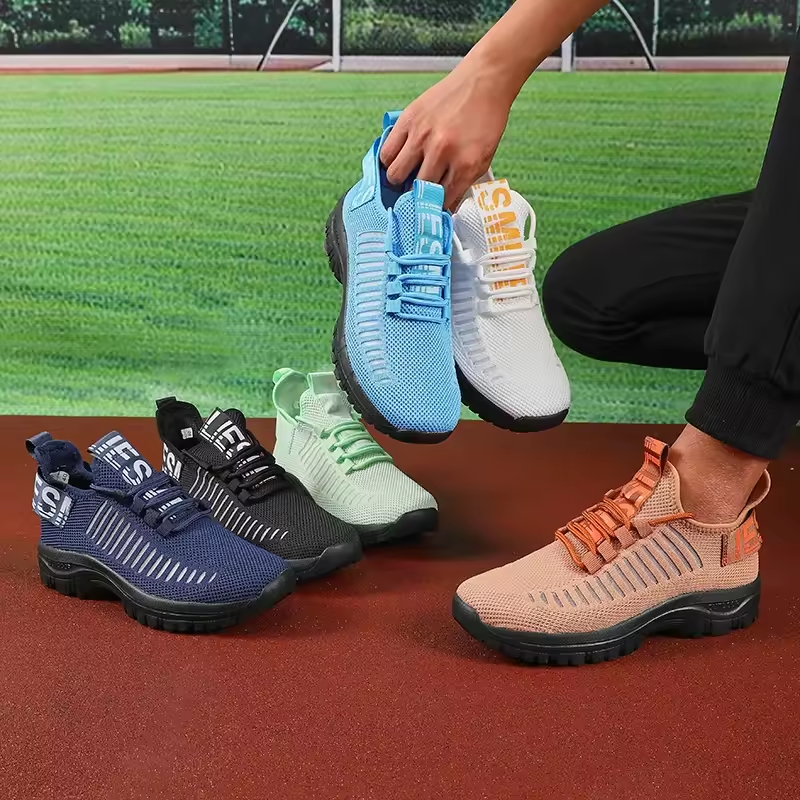
Frequently Asked Questions About Hoka Running Shoes
- Q: Are Hoka running shoes too bulky?
A: While they have thick soles, Hoka’s designs are streamlined for agility. Models like the Mach 5 are lighter than older versions. - Q: Can I use Hoka running shoes for walking?
A: Yes, their cushioning makes them ideal for walking, especially for those with joint pain. - Q: How often should I replace Hoka running shoes?
A: Replace every 300–500 miles or when you notice loss of cushioning or structural integrity. - Q: Do Hoka running shoes run narrow?
A: Hoka now offers wide sizes, but always try them on or read reviews for fit. - Q: Are Hoka running shoes suitable for sprinters?
A: Not ideal for short sprints—opt for lighter, faster shoes like the Hoka Tecton X.
These FAQs address common concerns, helping runners make informed decisions.
The Future of Running Shoes
As the demand for cushioned, durable shoes grows, running shoes continue to innovate:
- Adaptive Fit Technologies: Shoes that adjust to foot shape using stretchable materials or adjustable lacing systems.
- Eco-Friendly Designs: Brands like Hoka are incorporating recycled materials and sustainable manufacturing processes.
- Smart Sensors: Integrated sensors track gait, pressure points, and stride efficiency.
- Customizable Widths: Some models now offer made-to-order shoes based on 3D foot scans.
- Gender-Neutral Styles: Expanding size ranges to cater to all foot types, regardless of gender.
These trends highlight the growing emphasis on inclusivity and performance in running shoes.
Conclusion: Embrace the Benefits of Hoka Running Shoes
Hoka running shoes are a game-changer for anyone seeking comfort, support, and durability. Whether you’re a marathoner, trail runner, or casual jogger, the best running shoes for your needs exist. By understanding your foot type, selecting the right model, and maintaining your shoes, you’ll unlock their full potential. Invest in a pair of running shoes today and experience the difference in every stride!